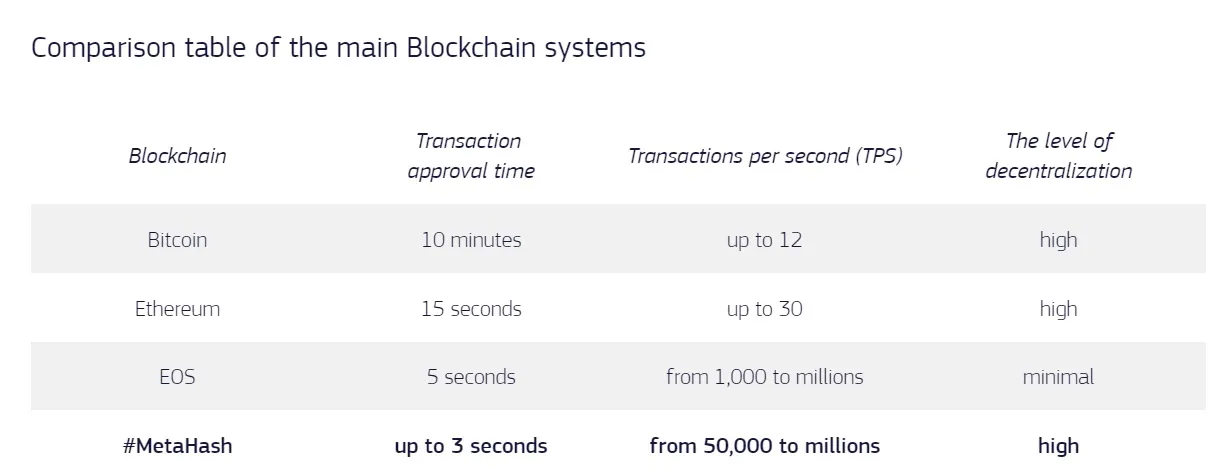
Metahash is a decentralized network for sharing digital assets which allows any project to become fully decentralized by enabling building of decentralized apps that work in real time.
Metahash is about interoperability as it provides a platform for existing blockchains and future ones to be integrated into one decentralized network which is capable of recording every transaction.
The Metahash network is aself-regulatory network that does not depend on individual creators. Rather, the Metahash network is managed by the users and open voting of Metahash coin (MHC) holders. It is a decentralized project, built mainly for users.
Metahash makes it possible to create decentralized applications that work like normal web services, create independent subchains that will allow numerous decentralized apps built on the network to function properly without overloading and the creation of tokenized digital assets that can be liquefied to cash or converted to any other cryptocurrency.
Why Metahash is Important

As blockchain adoption increases, different blockchain projects have emerged and keep emerging every day. However, these projects have been limited by a number of factors which need to be addressed.
Many existing blockchain networks have not been able to withstand the numerous transactions that their users demand hence they work at low speed and sometimes increase transaction fees.
Metahash builds a network that will accommodate billions of transactions per day and millions of transactions per second and the transactions are going to be free of charge!
Faster transactions will definitely improve blockchains and its adoption across the globe.
Security is also a major factor because hackers abound and a secure blockchain will build trust in users and be able to store data effectively. If the existing glitches are fixed, cryptocurrencies would be conveniently adopted into real life, blockchain networks will be used by people who have little or no knowledge of programming.
How Metahash Works
The Metahash network consists of four layers
- TraceChain
- MetaApps
- MetaGate
- MetaHashCoin
Metahash solves the of problem of slow transactions by building the network on TraceChain which is an automatic self-learning algorithm for routing signals over the network which grows as more nodes are added.
The decentralized apps on the network use the added nodes to optimize the location of required application copies. Developers create MetaApps and the community openly vote for or against the app.
The MetaGate is an open source interface that makes MetaApps compatible to the network and can be used to embed MetaApps into various applications and websites.
The MetaHashcoin is the digital currency used for payment across the network. Each transaction is protected by 5 different consensus algorithms and transfers can be made directly from Metahash to other networks. Other tokens of different networks can be used on the Metahash network.

Conclusion
The metahash network built a decentralized open source platform that solves the limitations of current blockchains. The Metahash network runs on the TraceChain and is able to handle millions of transactions per second seamlessly free of charge. The Metahash network is also secure and protected in case of any hack attempt.
MetaApps can be used to decentralize any service and can run in real-time like regular websites. The Metahash coin (MHC) is the digital currency that will be used to for services on the network and is interoperable.
Metaapps will replace smart contractsand the MetaGate will be a gateway to a decentralizded internet.
The Metahash team also has the necessary experience in cryptocurrency, financial and legal field to achieve their vision.
More information about Metahash can be found on the officia website: https://metahash.org/
and Metahash Whitepaper https://metahash.org/docs/MetaHash_WhitePaper_EN.pdf
MetaHash Telegram
MetaHash Twitter
My Eth address: 0xA1CdC777c409534271a3e1D4fa47Ad6c1C702C8d